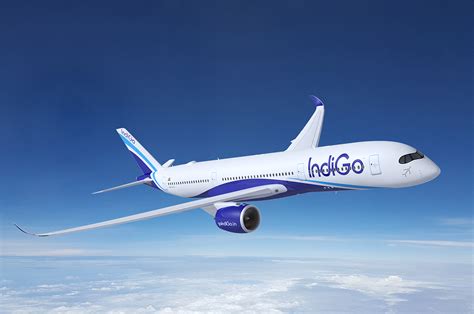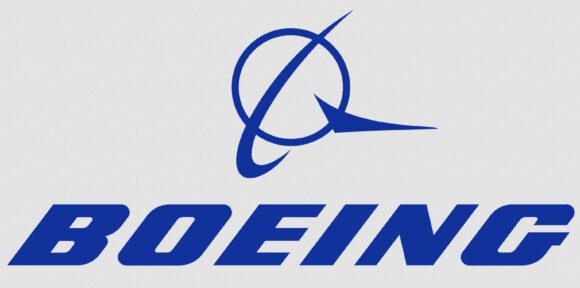This order was telegraphed a week ago. Even as late as yesterday morning we were hearing from competitors that the race was still on. But United selected Boeing late Thursday when it reported its fourth quarter numbers. The announcement was terse “Today, UAL announced it reached an agreement to acquire 40 new Boeing 737-700 aircraft which will enter the fleet beginning in mid-2017, replacing a portion of the capacity currently operated by regional partners.”
What does this mean for the small duopoly that fought long and hard for this deal? And are there other implications?
The Selection
- Bombardier – the miss hurts this company more than any of the competitors for the order. Bombardier had had put in every effort to be a winner with its new C Series. The aircraft impressed some at the airline. But apparently not enough of the key decision-makers were won over. Bombardier was only recently considered a real option. The considered opinion among many industry observers was that a win by Bombardier was, at best, a long shot. Even though its aircraft likely offered United the best economics.
- Embraer – this OEM was seen as the favorite for a long time. The current United team is heavily influenced by its former Continental employees who have long term excellent relationships with Embraer. Moreover, Embraer has been selling aircraft to United regularly. Perhaps United simply didn’t want to wait for the E2?
- Airbus – was not seen as runner in this race. Even though United’s Airbus fleet is old, it does not suffer any serious economic challenges with fuel prices at about $1/gallon. For Airbus United offers interest at single and twin aisle levels. Airbus is probably not too annoyed by this decision.
- Boeing – this is a very nice win for an aircraft model that has not been getting much market attention. The order looks great on paper but likely came at a massive discount. Boeing can deliver the aircraft fast because its plant is producing two 737s per day. In sheer production terms, Bombardier could never compete with this, no matter how good its aircraft might be. Moreover, United selected the -700 which underscores that they also see at least a medium-term (5 years) period of cheap fuel.
Implications
- The hill Bombardier has been climbing has suddenly become much steeper. Cheap fuel doesn’t help any of the next generation aircraft that are priced at a premium over current models. Bombardier has an additional challenge; it is completely new. In addition, Bombardier will not be able to deliver at the rates United probably wants aircraft. Bombardier will now focus on Delta, which made some kind remarks about the C Series.
- Embraer quietly continues to work on its E2. Knowing that post 2018, when its aircraft comes on line, United and others may be facing new challenges for which it will be ready.
- Airbus also keeps its powder dry. United is already a big customer and has selected the A350. It will probably be back for the A320neo before too long and Airbus will be ready.
- Boeing gave birth to United Airlines and Pratt & Whitney. Boeing’s history goes way back with United – further than any other relationship. We would not be surprised to see United take 777-300ERs at deep discounts also. Boeing is the incumbent at United and, as we have seen, will make any deal it has to, to remain critical to the airline.
Other Considerations
- We have been writing a lot about the impact of cheaper oil lately. We see the United selection as part of the outcome of cheaper oil. United selected a current generation technology aircraft because, quite simply, at current fuel prices the numbers work. Especially at a deep discount and fast delivery.
- The big order Republic Airways has with Bombardier needs to be drawing more attention. Both the customer and OEM know this delivery will not happen. It is an important issue to figure out what happens next. Does Delta make Republic a deal it cannot refuse?
- Regional airlines are going to get squeezed some more. Because the new generation regional jets are overweight by scope clause. The network airlines are quite likely to follow United’s lead and buy these aircraft for operation by their own pilots. The economic squeeze of high fuel prices is over for the foreseeable future. Network airlines could operate these jets efficiently – particularly since load factors are so high as the airline oligopoly holds the line on capacity (and fares).
Bottom Line
Low fuel prices aren’t favorable to new aircraft programs, particularly for new technology aircraft like the C Series that have not yet reached maturity in its airframe and engine operations. By choosing an existing aircraft that fits within United’s existing fleet, it avoids transition costs like pilot training and initial provisioning, avoids potential disruptions during the teething period for a new aircraft, and is able to more quickly integrate aircraft into its fleet.
In an environment with $1.00 rather than $3.25 fuel, and Boeing having ample capacity to deliver aircraft quickly, Bombardier would have needed to discount their plane likely below cost to win the deal. Boeing could incrementally price its aircraft to fill the remaining gaps in the 737NG production line prior to the transition to MAX, and offer these aircraft at prices much lower than Bombardier could match.
There is no question that Airbus and Boeing don’t want a third player growing into their market, and know that Bombardier is the master of the stretch and before too long, a CS500 and CS700 could appear. The net result is despite the CS300 being a much better airplane than the 737-700NG, both economically and from a passenger preference standpoint, Boeing made them “an offer they couldn’t refuse.” As the chart demonstrates, the 737-700 has attracted minimal attention for a long time. Which is what makes the United order all the more attention grabbing.
Finally the news may also indicate there is unfinished business. Take a look at this story from last October. A key item here is this: “United Airlines plans to order a fleet of 100-seat jetliners from either Bombardier Inc. or Embraer SA if it can agree on terms for a two-year contract extension with pilots in expedited bargaining.”
The 737-700 is NOT a 100-seater. It competes with the CS300 which it beat for this deal. But United was looking for 100-seat aircraft. When asked about this early this morning, United responded “We continue to work with all of our manufacturers on our future fleet needs. These aircraft are specifically meant to decrease our reliance on the 50-seat aircraft.” Based on this comment and seeing the linked story above it could mean the Boeing order eclipses the original 100-seat interest. (As of this writing, Boeing has not confirmed the United deal)
However note the headline in the linked story. United was looking for 100 new airplanes. The 100 seats and 100 airplanes are easy to confuse. We suggest there is unfinished business with respect to United’s fleet planning in this segment.
Views: 3





Are we hearing dumping here ?
The 100 +seater does seem a bit close in capacity to the United 118 seat 737-700, when there is a big gap from 118 seats to the 156-160 seater United 737-800? Im thinking United really needs a say 125-130 seat plane in its typical configuration to fit between 100 seats and 155 .
It may have helped the 737-700 order now when the 737-7Max may not be flying for some time, if ever.
“The net result is despite the CS300 being a much better airplane than the 737-700NG, both economically and from a passenger preference standpoint, Boeing made them “an offer they couldn’t refuse.” ”
I’m not saying it’s happening, but conditions are very ripe for Boeing or Airbus to try to use predatory pricing to knock Bombardier out of the market. I hope everybody plays clean.
It sounds to me very much like United is still planning on ordering a separate batch of 100-seaters. Had Bombardier pulled out a CS300 contract today, the CS100 would be in a strong position for that next contract. As is, Embraer arguably has the more promising position, with United already flying a decent number of the smaller E-Jets.
Yep.
Bombardier needs a foothold at UAL mainline. They are present at United Express but with mainline being a Boeing Airbus duopoly, it will be impossible to sell a 100 seater there. Look for more 737-700 sales
“I’m not saying it’s happening, but conditions are very ripe for Boeing or Airbus to try to use predatory pricing to knock Bombardier out of the market. I hope everybody plays clean.”
————–
Good One!
The CS300 is an unproven aircraft. Also the P&W geared turbo fan is also untested under the rigors of long days of flying every day.
While the 737-700 uses more fuel, it is not a new type and that alone saves money by not having to train new crews and mechanics and stocking a new line of parts.
Passengers don’t care what type of aircraft they are flying on for short 1-2 hour flights. I never heard a customer ask at the gate what type of aircraft they will be flying on. Passenger comfort is dependent on how the airline outfits the seating arrangement and most are cramming in more seats.
UA will more than likely go with Embraers 175-190’s.
United’s Fleet Planners should be immune to Pilot Unions’ meddling into free and unimpeached selection of the right sized aircraft at the right time from their Chicago office. Corporatistic blocking of free access to feeder aircraft sized beyond 76 seats for the numerous commuter/regional sister units participating in the United Express group is inacceptable and seen as a hindrance for optimised fleet management. There are now altogether some 550 units Commuters or Regional Jets sized under 76 seats in United Express’ fleet, whereof a near-term unit size upgrade (to 95 – 110 pax) is mandatory for some +/- 200 of those, The Scope Clause is seen as a direct impeachment. Or United may select A319 in the HQR guise (ie H19QR NEO), the size of which @ United Express LOPA standards will be close to 98 pax, a module size which ALPA may agree to as job-politically ‘neutral’ and consequently let deploy into and so pride the future fleets of selected United Express partners ? Not all of the new aircraft will suit United + United Express’ needs if aircraft sized 110-130 pax (such as eg A319 or 737-700) must by Scope Clause be restricted to United itself and if fleet family commonality is the new priority small aircraft selection driver throughout the combined fleets of the Mainline including Commuter/Regional associates ?
This is a really bad move on United’s Part because if Bombardier goes away just leaving Boeing and Airbus the price of aicraft is going through the roof.